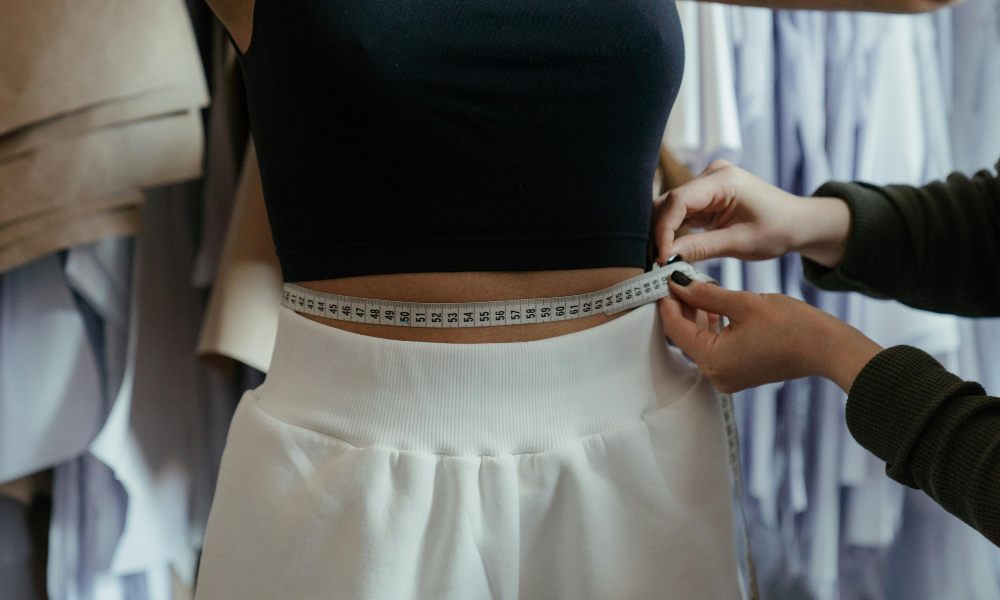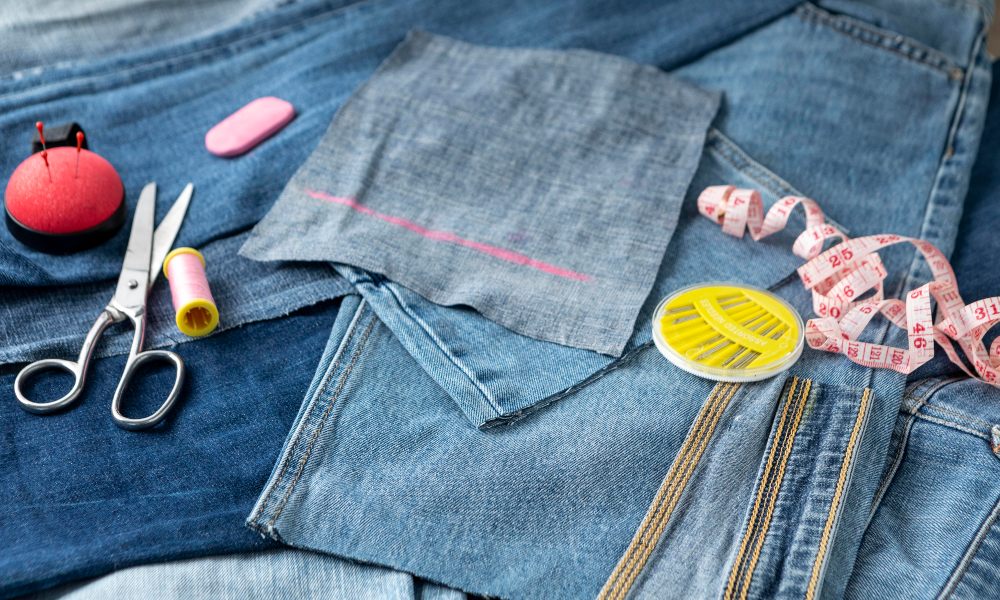Have you ever wanted to make your pants from scratch? Learning how to sew pants may seem daunting, but with the right supplies, pattern, and techniques, even beginners can create custom-fit trousers, jeans, leggings, joggers, and more. This comprehensive guide will walk you through each step of sewing pants, from choosing fabric and sizing a pattern to hemming and finishing your homemade pants.
Let’s review the essential tools and materials you’ll need to sew pants successfully.
Gathering Your Sewing Pants Supplies
Essential Sewing Tools
- A sewing machine – select a basic model that can handle multiple fabric types and offers a straight stitch. More advanced machines may have specialty stitches for sewing knits or stretch fabrics.
- Scissors – both fabric shears for cutting out pattern pieces and smaller scissors for clipping threads and notches
- Seam ripper – for correcting mistakes
- Pins and sewing clips – to temporarily hold fabric pieces together
- Measuring tape
- Hand-sewing needles
- Marking tools – tailor’s chalk, fabric marker, etc.
Materials
- Pants pattern – choose your desired style, taking into account your skill level and fabric type
- Fabric – cotton, wool, knit, denim – pre-wash woven fabrics before cutting
- Matching thread – all-purpose polyester or cotton thread typically works well.
- Elastic, zippers, fasteners – check your pattern guide for closures needed
- Interfacing – used to reinforce areas like waistbands
Once you’ve gathered the essential tools and materials, it’s time to choose a pants pattern.
Selecting the Right Pants Sewing Pattern

Sewing patterns for pants come in a wide range of styles, sizes, and skill levels. Consider the following when selecting a pattern:
- Your skill level – simple pull-on pants or pants with an elastic waistband are beginner-friendly
- Style of pants – trousers, jeans, joggers, leggings, etc.
- Fit – check the finished garment measurements against your own
- Fabric type and stretch – woven, knit, or stretch wovens
- Closures – zipper fly, elastic waist, drawstring, buttons/buttonholes
Popular patterns for first-time pant sewing include pull-on lounge pants, pajama pants, and elastic waist pants or leggings. More advanced sewers may want to tackle a classic trouser pattern with a fly front zipper.
Once you’ve chosen your pattern, read through the instructions and check that you have the required notions and closures on hand before cutting.
Preparing Fabric and Cutting Out the Pieces
To begin constructing your pants:
- Pre-wash and press fabric as recommended, especially with woven fabrics that may shrink
- Pin pattern pieces to fabric, ensuring there is enough fabric to match the layout diagram
- Cut pieces carefully, transferring any pattern markings to the fabric.
- Mark darts, pleats, pocket placement, and other key points on the wrong side of fabric pieces with chalk or marking tools.
Be sure to cut out all required pattern pieces for fronts, backs, waistbands, pockets, and facings. Transfer any markings for darts, pocket placement, pleats, etc. Having precise markings is crucial for assembly later on.
Once your fabric is prepped and pieces cut out, it’s time for the fun part – sewing!
Sewing Your Pants Step-By-Step
Constructing pants begins with any interior elements like pockets. Then, you’ll join the main pieces at the side seams and inseams. Attaching the waistband, zipper, and any other closures comes later. Follow these general steps:
Sew Inner Elements and Pockets
- Make any pockets, following pattern directions to attach pocket bags, facings, and linings
- Sew darts on front and back pieces for shaping
Join Inner Leg Seams
- Sew back leg pieces together at the center back seam first
- Attach front to back at inseams, stitching from bottom hem to crotch
- Finish raw edges together by serging or zigzag stitching
Create Side Seams
- Stitch front-to-back pieces at side seams
- Press all seams open or to one side
Attach Waistband and Closures
- Make waistband following pattern guide
- Attach zipper, buttons, elastic as needed
- Sew the waistband to the top of the pants, enclosing raw edges
Hem Pants
- Try on pants, pinning up the hem to the desired length
- Fold up hem allowance and stitch by hand or machine
- Consider adding interfacing for crisper hems
Be sure to try on the pants frequently for fit, adjusting the rise, inseams, side seams, and hems as needed.
Hemming and Finishing Touches for Flawless Pants
Once your pants are assembled, all that’s left is hemming them to the perfect length. Here are some tips for hemming pants evenly:
- Try pants on, and have someone mark hem length with pins
- The hem allowance’s raw edge can be finished by using either a serging or a zigzag stitch.
- Fold up the hem, press, and pin in place
- Topstitch around hem by machine or hand using a slip stitch
For a professional finish, take the time to:
- Press seams, hems, and waistband well-using steam
- Tack down interior waistband edges
- Add belt loops if desired
- Sew buttons/buttonholes or make other needed closures
After all your hard work, it’s time to try on your finished pants and show them off! What was the most challenging part of making your pants? Share your projects and tips with the sewing community.
Frequently Asked Questions
What type of fabric should I use to sew pants?
The best fabrics for sewing pants include cotton, wool, denim, knits, stretch wovens, and lightweight suiting fabrics – pre-wash woven fabrics before cutting out pattern pieces.
What sewing machine do I need to make pants?
A primary sewing machine that offers a straight stitch and zigzag stitch will work for most pants projects. Models with specialty stitches can handle stretch fabrics better.
How do I get a perfect hem on pants?
Mark the hem allowance carefully, then finish the raw edge with a zigzag stitch or serging. Fold up the hem, press, pin, and use a straight stitch or hand slip stitch to sew the hem. Using interfacing inside the hem allowance can help pants keep their shape.
Can I use store-bought pants as a pattern?
Yes, you can use an existing pair of well-fitting pants to create your custom pattern. Carefully remove the pants at the seams and use the pieces to make a template.
What length should pants be hemmed?
For full-length pants, the hem is typically sewn so it rests just at the top of the shoe or about 1/4″ off the floor. However, hem lengths can vary by personal preference and pant style.
You can make custom-fitted pants to suit your style and body with the correct pattern, preparation, and sewing techniques. So grab your fabric, fire up your sewing machine, and get ready to stitch up some homemade pants!
***
Main image: freepik




